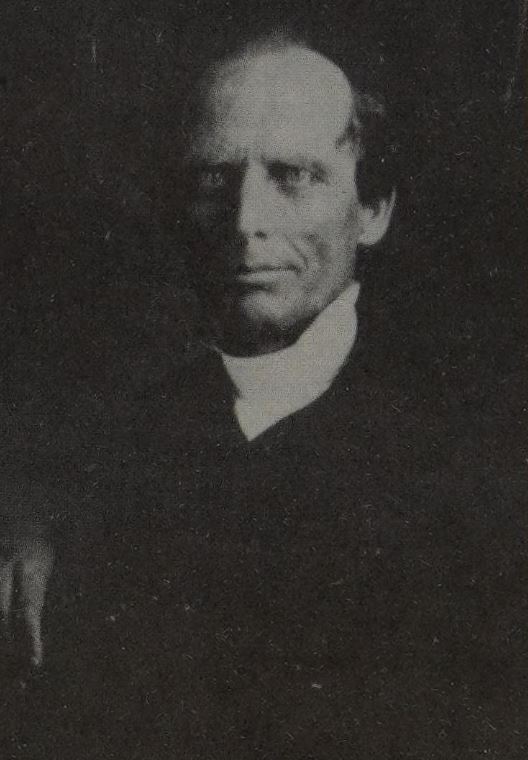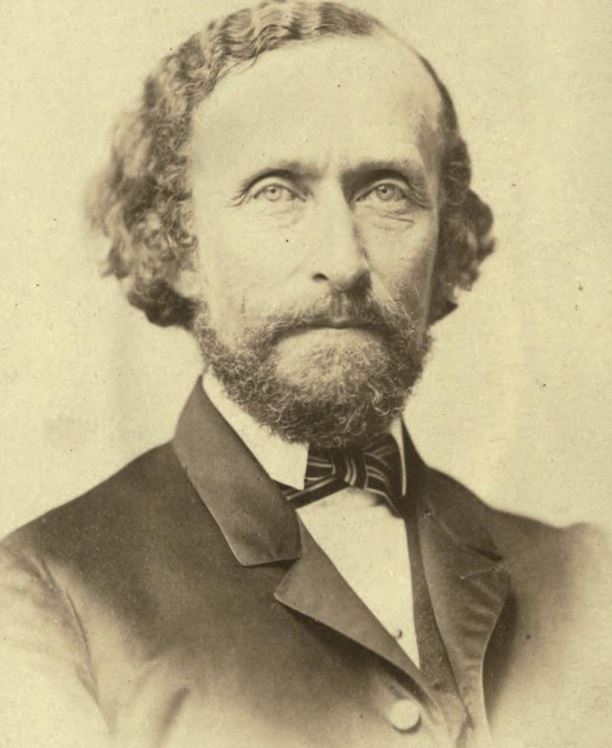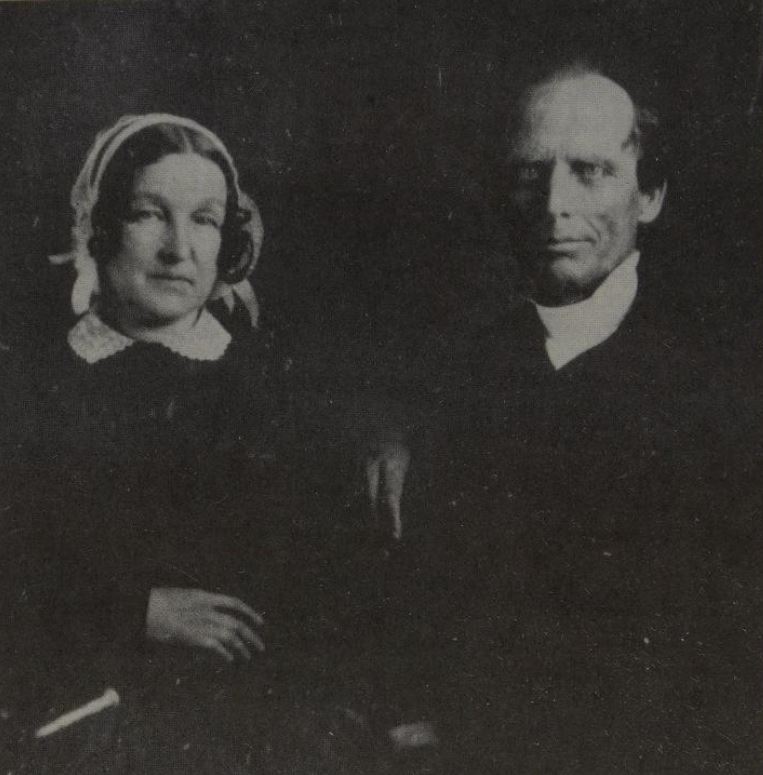


Charles Grandison Finney – Father of modern revivalism and the leading figure of the Second Great Awakening
Introduction
Charles G. Finney’s (1792-1875) unique methods of evangelism earned him the title of the “father of modern revivalism.” His methods paved the way for other mass-evangelists, like Dwight L. Moody, John W. Chapman, Billy Sunday, and Billy Graham, who adapted and built upon Finney’s methods.
Background Information
With this revival account being one in a sequence of revivals during the life of Charles G. Finney, we recommend reading them in chronological order:
► 1824 Evans Mills German Settlement Revival
► 1824 Antwerp, New York Revival
► 1824 Revival at Perch River and Other Locations
► 1825 Revival in Gouverneur, New York
► 1825 Revival in De Kalb, New York
► 1825 Revival in Western, New York
► 1825 Revival in Rome, New York
► 1826 Revival in Utica, New York
► 1826 Revival in Auburn, New York
► 1826-1827 Revival in Troy, New York
► 1827 New Lebanon & Stephentown Revivals
► 1827-1829 Revival at Wilmington and Philadelphia
► 1829 Reading, Pennsylvania Revival
► 1829 Lancaster, Pennsylvania Revival
► 1829 Columbia, New York Revival
► 1830 New York City Revival
► 1830-1831 Rochester, New York Revival
► 1831 Revivals in Auburn, Buffalo, Providence & Boston
► 1832 New York City Revival
► 1835-1840 Revivals in Oberlin, Ohio
► 1841-1842 Boston & Providence Revivals
► 1842 Rochester Revival
► 1842-1843 Revivals in Oberlin, New York, and Boston
► 1849 Revivals in Houghton, Birmingham, and Worcester
► 1850-1851 London, England Revival
► 1851-1853 Revivals in Oberlin, New York City, Hartford, & Syracuse
► 1853-1855 Revivals in Ohio & New York
► 1855-1856 Rochester Revival
From Oberlin to Boston
While at his home in Oberlin, Ohio, conducting his work of pastoring the First Congregational Church, being the president of Oberlin College (from 1851 – 1866), as well as being the professor of theology at that school, he received an invitation from the pastor of Park Street Congregational Church, Rev. Andrew Leete Stone, to hold meetings at his church in Boston, Massachusetts.

Accepting the invitation, Finney began preaching in Boston on December 7, 1856. During this stay in Boston he preached mainly at Park Street Church, with occasional meetings at three other churches.
► Preached twice on Sundays.
► Preached 4 evenings during the week, and once on Friday morning.
► Finney’s wife, Elizabeth, held meetings for women.
The Beginning of the Revival
Upon commencement of his work in Boston, Finney focused primarily on preaching to Christians, to those who were in need of being stirred up, as well as to reclaim those who had backslidden.

Rev. Andrew Leete Stone (Park Street Church)
Salvation of the Pastor of Park Street Church
Rev. Stone, who invited Finney to Boson for the sake of his own soul, as well as for the sake of his congregation, confessed to Finney that he himself had serious questions as to his own salvation. After hearing Finney preach, and conversing with him in private, he did make a profession of his faith in Christ.
After giving the testimony of his conversion several times at this prominent church, the news of it drew in people by the hundreds, causing the revival’s fires to spread exponentially.
Part of a National Awakening
This period of time has been considered the Third Great Awakening, having had its start during Finney’s 1855-1856 Rochester, New York Revival. The Rochester revival powerfully influenced New York, and with Finney’s time spent in Boston, the revival’s influence began to spread throughout New England, and by the following year it was recognized as having become a national awakening (see the 1857 New York Prayer Revival).
In the April 23, 1857, edition of the The Independent, a religious periodical used to promote Congregational churches, we find a small report of Finney’s Boston meetings:
Members of other churches in the city soon began to come in considerable numbers; then from the neighboring towns; and finally from distant places in New Hampshire and Maine, came ministers by scores, and private Christians by hundreds, if not by thousands, to hear the word, and catch some of the sacred influences that evidently attended it.
The Work Was Not Finished
Finney knew the revival’s influence was spreading, with it being “quite extensive,” and with “many very striking cases of conversion.” But due to his responsibilities at Oberlin College he was required to leave Boston in April 1857, with the promise that he would return the following winter.

Finney’s Return to Boston
After experiencing an awakening at Oberlin College, Finney left his home in Oberlin, Ohio, for Boston in late November, arriving in Boston on December 2, 1857, and he remained there till April 8, 1858.
It was soon to be recognized that Finney was not the central figure in this awakening/ revival, because it became much larger than him, spreading throughout the United States.
On March 12, 1858, The Congregationalist reported on the spread of the revival:
The first manifestation of the present general awakening was in New England, particularly in Connecticut and Massachusetts, from which the spirit of the revival spread rapidly through the Middle and Western States, or rather broke out simultaneously in all.
Two Thousand-Mile Prayer Meeting
At one of the Boston prayer meetings, a man from Omaha, Nebraska, stood up and testified that all along his “2,000 mile” journey from his home to Boston, he found the land strewn with prayer meetings, “a continuous prayer meeting all the way.”
The Congregationalist reported on April 2, 1858, that:
There was a line of prayer meetings along the whole length of the road; so that wherever a Christian traveler stopped to spend the evening, he could find a crowded prayer meeting, across the entire breadth of our vast republic.
This revival spanned a period of approximately nine months, from September 1857 through May 1858, reaching its peak in March of 1858.
Extraordinary Prayer Propelled the Revival
A unique feature of the 1855-1856 Rochester, New York Revival was the passion to pray. This same passion carried over to the city of New York, as well as to the city of Boston when Finney was there.
Finney wrote about this extensive prayer effort on March 11, 1858:
Such is the desire to pray & be prayed for that people prefer prayer meetings to preaching. At prayer meetings the people don’t want exhortation nor talk but prayer. This is a very marked feature of this work at present.
Finney said that the people preferred prayer meetings over preaching, with the general consensus following this line of sentiment:
We have had instruction until we are hardened; it is time for us to pray.
With the spreading prayer meetings being led by the laity, the ministers were said to have been thrown “into the shade” as to the revival’s forward momentum. By March 1858 there were said to have been 150 meetings for prayer in New York City and Brooklyn alone.

Charles Finney and Elizabeth, his second of three wives. His wives accompanied him on his ministry trips. Elizabeth also ministered to various mission organizations and women’s groups.
Women in Ministry and Prayer
The men’s prayer meeting was held daily, with thousands assembling in many different locations. Following the men’s meetings, the women also had their meetings, packing out the buildings.
In his book The Prevailing Prayer Meeting, Charles Finney mentioned these ladies’ prayer meetings, which his wife, Elizabeth, led and coordinated:
If the business men have had their daily meetings, so have the women; if the men have visited and conversed with individuals, so have the women. God has greatly used and greatly honored the instrumentality of woman, and is still doing so. The ladies’ meetings are now regarded as a most important branch of the great movement in many places.
In Boston, I have seen the vestries crowded to suffocation with ladies’ prayer meetings, and these ladies, comprising some of the most educated and talented to be found perhaps in the United States.
The Efforts Used That Carried the Revival Forward
► Prayer meetings
► The answers to prayers were so constant and startling, that they kept the people on their knees.
► Personal visitation and conversations.
► Distribution of tracts.
► The efforts were primarily carried out by the laity, both male and female, with the ministers taking a back seat to these efforts.
► The newspapers were highly favorable to the revivals, inserting entire sermons, as well as keeping the public informed of the revival’s movement.
Results of the Revival
► According to revival historian J. E. Orr, the number of converts was estimated to be 1 million, with conversions during some weeks numbering 50,000.
► A divine influence filled the land, with the American South winning as many converts to Christ, proportionately, as the population in the North.
Primary Sources
► Chapter XXXIII: The Memoirs of Charles G. Finney by Charles G. Finney
► The Memoirs of Charles G. Finney: The Complete Restored Text by Charles G. Finney
Secondary Sources
► Charles G. Finney by Wikipedia
► Charles Grandison Finney & the Second Phase of the Second Great Awakening by Christian History Institute
► Great Revivals and the Great Republic by Warren Candler
► A History of American Revivals by Frank G. Beardsley
► Man of Like Passions: The Life Story of Charles Grandison Finney by Richard E. Day
► Memoirs of Revivals of Religion by Charles G. Finney
► Memorial Discourses by Rev. A.L. Stone
► The Fervent Prayer: The Worldwide Impact of the Great Awakening of 1858 by J. E. Orr
► The Prevailing Prayer Meeting by Charles G. Finney
► The Story of Oberlin by Delavan L. Leonard
Return to List of Revival Stories
Chet & Phyllis Swearingen:
Office: (260) 920-8248
romans1015@outlook.com
Beautiful Feet
P.O. Box 915
Auburn, IN 46706

